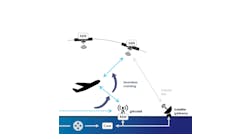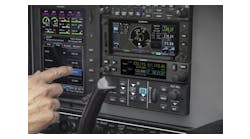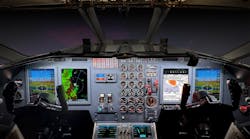Kamenz, GERMANY / 20 January 2016 — At the 2016 edition of the Sebring U.S. Sport Aviation Expo, Flight Design announced development work progress on the advanced occupant protection research and testing referred as the “Safety Box.” The effort seeks to ensure higher occupant safety by creating a safety cell around the aircraft cockpit. Flight Design’s new four seat C4 was chosen as the launch testbed.
Germany’s Ministry of Economic Affairs provided funding for the research project that aims at development of a modular cabin safety system for light aircraft. The new system provides a safety cage around the occupants of an aircraft that builds upon several concepts, such as intelligently designed and located crash absorbing components, a stiff cabin structure with dedicated load paths for the majority of high load cases, advanced seat installation, and restraint systems.
“We consider the occupant protective concept for improved crashworthiness one of the most important features of the C4 said Matthias Betsch, CEO of Flight Design. “We are pleased our four seat project was selected. Experience and data acquired will be shared with other organizations.”
“To improve general aviation safety, the Safety Box program took at a holistic approach to crashworthiness.” added Flight Design USA President Tom Peghiny. Based in the USA, Peghiny has been a contributor to the C4 project. “An energy absorbing cabin similar to what is done with passenger automobiles and race cars is where we need to be moving,” he said. “Next we will move toward full scale crash testing.”
Using a C4 airframe, a full scale crash test is scheduled for March 2016 with the German University, Ostfalia Hochschule für angewandte Wissenschaften, Fakultät Fahrzeugtechnik, Lehr- und Forschungsgebiet Fahrzeugsicherheit, led by Prof. Harald Bachem, of Wolfsburg, Germany. The university maintains a test site on a former military base where they commonly do full scale impact simulations with automobiles.
The full scale crash test will be done with the C4 load test airframe swung into the ground to simulate a heavy, but survivable impact. The test article C4 will be suspended from two mobile cranes with a third one to hold the aircraft into pre-test position. The aircraft will be equipped with four anthropomorphic test dummies, load sensors and will be monitored by numerous high speed cameras. This test setup is very close to what NASA does in the USA at the NASA Langley facility in Hampton Rhodes, Virginia.
“We were very pleased that Ostfalia Hochschule offered their facility and staff for this important test of the Safety Box concept using the C4 as a test article,” commented Oliver Reinhardt, Head of Airworthiness for Flight Design’s Design Organization. “The university has great experience doing full scale vehicle testing but the test of a light airplane is a first for them and a great project for their students and staff.”
“The University sees good possibilities to offer this service to other parties in the future, said Reinhardt. “Considering this type of testing is envisioned as an alternate means of compliance in the new Part 23 [rewrite] proposals, this is very attractive.”
In preparation for the crash test, Flight Design is currently producing seat shells that were completed by Autoflug in January. In parallel Flight Design is completing preparations of the test sample airframe.
FACTS ABOUT FLIGHT DESIGN
Flight Design is a 28-year-old manufacturer based in Germany. The company remains the worldwide Light-Sport Aircraft market leader thanks to its popular CT series of aircraft. Nearly 2,000 of these aircraft are flying in 39 countries. One of the first aircraft certified under ASTM International standards in 2005, the CT (“composite technology”) boasts the largest fleet of LSA in America after more than ten years. Flight Design sold the first LSA to India and was the first LSA to earn Chinese Type Design Approval. Three times a CT has been flown around the world. In 2011, the German company unveiled and has test flown its C4 four seat general aviation aircraft based on the CT technology.



